Making dough has traditionally been a time-consuming task, often requiring a lot of elbow grease.
However, with the advent of modern kitchen appliances, like a stand mixer or a food processor, the process has become significantly more straightforward.
One such appliance that has revolutionized dough-making is the food processor.
Ease and Efficiency
Using a food processor to make dough is incredibly easy. Gone are the days of kneading the dough by hand for extended periods.
With a food processor, you can achieve a smooth and elastic dough in a fraction of the time.
Simply add your ingredients, and let the machine do the work. This not only saves time but also ensures consistency in the dough's texture.
For more insights into the science behind perfect dough, check out, Understanding Dough Science, The Science of Doughs and Bread Quality.
Benefits Over Traditional Methods
There are several advantages to using a food processor over traditional dough-making methods:
- Consistency: The food processor ensures that all ingredients are evenly mixed, leading to a more consistent dough.
- Less Effort: No more hand kneading! The machine does all the hard work, reducing the physical effort required.
- Speed: Making dough in a food processor is faster, allowing you to move on to the next steps of your recipe more quickly.
- Versatility: Food processors can handle various types of dough, from bread to pizza to pastry. This versatility means you can experiment with different recipes using the same appliance.
If you're new to baking or looking to enhance your skills, Baking Tips and Tricks, 7 Ways to Improve Your Baking Skills, is a fantastic resource to explore.
Regardless of whether you're just starting out or are an experienced baker, this article offers insights on how to make dough in a food processor, ensuring your baking experience is both streamlined and delightful.
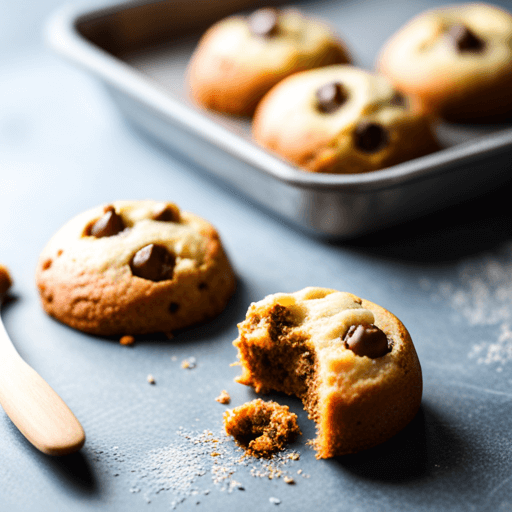
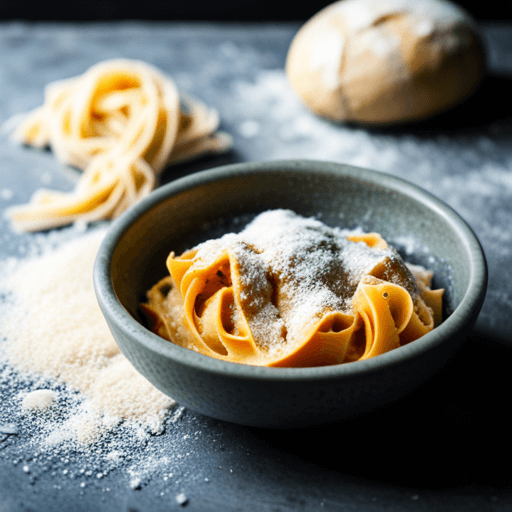
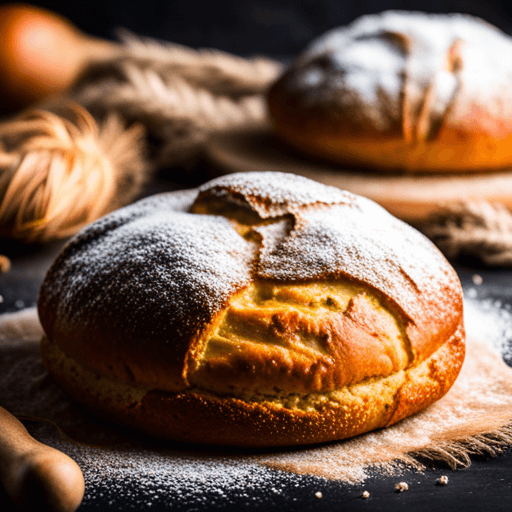
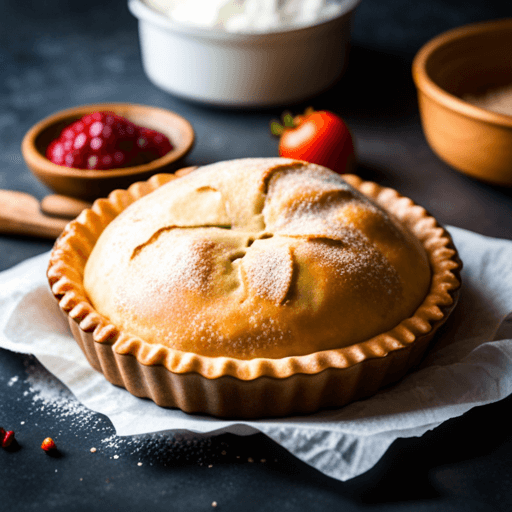

From left to right: baked cookie, pasta, bread, pie and pizza dough from a food processor
How To Make Pasta Dough
Ingredients List:
- 2 cups of all-purpose flour (plus extra for dusting)
- 3 large eggs
- A pinch of salt
Detailed Process from Mixing to Rolling:
1. Preparation: Place the flour on a clean surface, making a well in the center.
2. Adding Eggs: Crack the eggs into the well and add a pinch of salt.
3. Mixing: Using a fork, gently whisk the eggs, gradually pulling in flour from the edges, until a shaggy dough forms.
4. Kneading: Once it's combined, knead the dough with your hands until it becomes smooth and elastic. This should take about 10 minutes.
5. Resting: Wrap the dough in plastic wrap and let it rest for at least 30 minutes at room temperature. This allows the gluten to relax, making the dough easier to roll.
6. Rolling: After resting, divide the dough into four equal parts. Using a rolling pin or pasta machine, roll out each portion into thin sheets.
Storing and Using the Pasta Dough:
- Storing: If not using immediately, wrap the rolled dough in plastic wrap or place it in an airtight container. It can be stored in the refrigerator for up to 2 days.
- Using: When ready to use, cut the rolled dough into desired shapes, such as fettuccine, tagliatelle, or pappardelle. Cook in boiling salted water until al dente.
Food Processor Pasta Dough - Pinch and Swirl
How To Make Cookie Dough
Ingredients Overview:
- 1 cup unsalted butter, softened
- 1 1/2 cups granulated sugar
- 2 large eggs
- 2 1/4 cups all-purpose flour
- 1/2 teaspoon baking powder
- 1/2 teaspoon salt
- 1 teaspoon vanilla extract
- Optional: chocolate chips, nuts, or other mix-ins
Process of Combining Ingredients in the Food Processor:
1. Creaming Butter and Sugar: In the food processor, combine the softened butter and sugar. Process until the mixture is light and fluffy.
2. Adding Eggs and Vanilla: Add the eggs one at a time, processing after each addition. Add the vanilla extract and blend until combined.
3. Dry Ingredients: In a separate bowl, whisk together the flour, baking powder, and salt. Gradually add this mixture to the food processor, pulsing until just combined.
4. Mix-ins: If using, add chocolate chips or other mix-ins and pulse a few times to incorporate.
Tips for Baking Perfect Cookies:
- Chill the Dough: For best results, refrigerate the cookie dough for at least an hour before baking. This helps prevent the cookies from spreading too much.
- Evenly Sized Cookies: Use a cookie scoop or tablespoon to ensure that all cookies are the same size, ensuring even baking.
- Baking: Preheat the oven to 350°F (175°C). Place cookie dough balls on a parchment-lined baking sheet, ensuring they are spaced apart. Bake for 10-12 minutes or until the edges are golden brown.
- Cooling: Allow the cookies to cool on the baking sheet for a few minutes before transferring them to a wire rack to cool completely.

Baked cookie dough from a food processor
How To Make Food Processor Pizza Dough Recipe
Ingredients Required:
- 2 1/4 teaspoons active dry yeast (1 packet)
- 1 1/2 cups warm water (110°F or 45°C)
- 3 1/2 to 4 cups all-purpose flour
- 2 tablespoons olive oil
- 2 teaspoons sugar
- 2 teaspoons salt
Step-by-Step Process:
1. Yeast Activation: In a bowl, dissolve sugar in warm water. Sprinkle yeast over the top and let it sit for 10 minutes, or until it becomes frothy.
2. Mixing: In a large bowl, combine flour and salt. Make a well in the center and pour in the yeast mixture and olive oil. Stir until the mixture forms a ball.
3. Kneading: Turn the dough onto a floured surface and knead dough for about 5 minutes, or until smooth and elastic.
4. Rising: Place the dough in a greased bowl, cover with a damp cloth, and let the dough rise in a warm place for 2 hours, or until it has doubled in size.
5. Shaping: Punch down the dough and turn it out onto a floured surface. Shape it into your desired pizza shape.
Tips for Achieving Perfect Pizza Crusts:
- Allow the dough to rise sufficiently; this develops flavor and texture.
- Preheat your oven to the highest setting for a crispy crust.
- If using a pizza stone, preheat it in the oven for better results.
- Avoid overloading with toppings; this can make the crust soggy.
How To Make Pie Crust
Ingredients Needed:
- 1 1/4 cups all-purpose flour
- 1/2 cup unsalted butter, chilled and diced
- 1/4 cup cold water
- 1/4 teaspoon salt
Step-by-Step Guide to Achieving a Flaky Pie Crust:
1. Combining Ingredients: In a large bowl, combine flour and salt. Cut in butter until the mixture resembles coarse crumbs.
2. Adding Water: Gradually sprinkle the cold water over the flour mixture, stirring until the dough holds together.
3. Forming the Dough: Once the dough comes together, form it into a ball. If it's too crumbly, add a bit more water.
4. Chilling: Wrap the dough ball in plastic wrap and refrigerate for at least 4 hours, or overnight. This allows the fats to re-solidify, ensuring a flaky crust.
5. Rolling Out: On a floured surface, roll out the dough to fit your pie dish.
Filling and Baking Recommendations:
- Always preheat your oven according to the pie recipe.
- For a golden finish, brush the pie crust with an egg wash (1 egg beaten with 1 tablespoon of water) before baking.
- If making a fruit pie, consider adding a tablespoon of cornstarch to the filling to prevent it from becoming too runny.
- For blind baking (pre-baking without filling), line the crust with parchment paper and fill with pie weights or dried beans. Bake at 425°F (220°C) for 12-15 minutes.
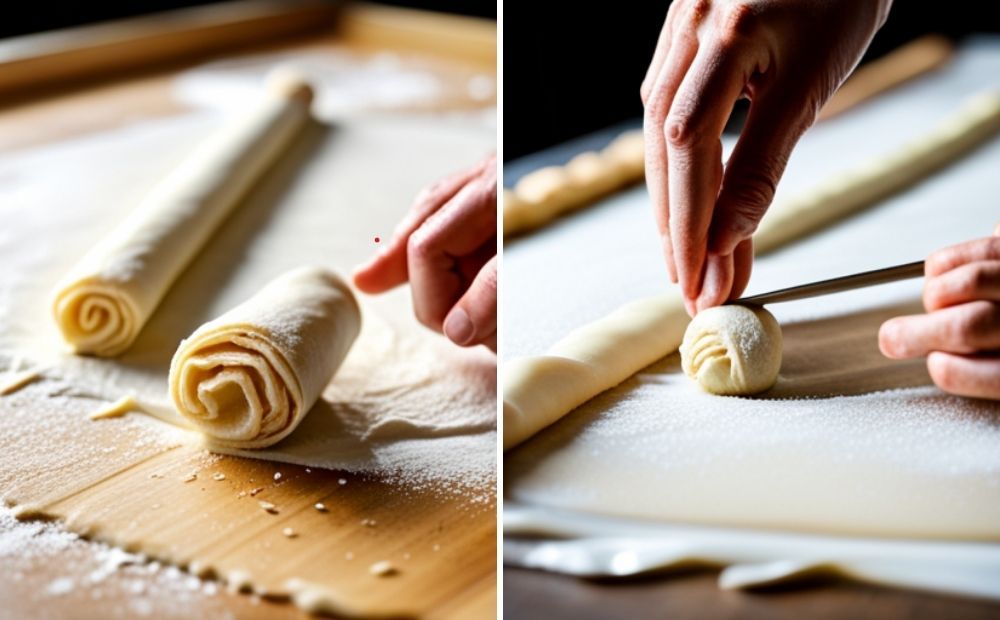
Pie dough rolled out from a food processor
How To Make Bread Dough
Essential Ingredients:
- 4 cups all-purpose or bread flour
- 1 packet (2 1/4 teaspoons) active dry yeast
- 1 1/2 cups warm water (110°F or 45°C)
- 2 teaspoons sugar
- 2 teaspoons salt
- 2 tablespoons olive oil or melted butter
Process from Mixing to Proofing:
1. Yeast Activation: Dissolve sugar in warm water in a bowl. Sprinkle yeast over it and let sit for about 10 minutes until frothy.
2. Combining Ingredients: In a large mixing bowl, combine flour and salt. Make a well in the center and pour in the yeast mixture and oil or butter. Mix until a dough forms.
3. Kneading: Turn the dough onto a floured surface and knead dough for about 10 minutes, or until smooth and elastic.
4. First Rise: Place the kneaded dough in a greased bowl, covering it with a damp cloth. Allow it to rise in a warm place for about 1 to 1.5 hours, or until it has doubled in size.
5. Shaping and Second Rise: Punch down the risen dough and shape it into a loaf. Place it in a greased loaf pan and cover again. Let it rise for another 30 minutes.
Baking Tips for a Golden Crust:
- Preheat your oven to 375°F (190°C).
- Before baking, brush the top of the loaf with a mixture of beaten egg and water (egg wash) for a shiny, golden crust.
- Bake for about 30 minutes or until the bread sounds hollow when tapped on the bottom.
- Allow the bread to cool on a wire rack before slicing.
If you are in need a new food processor to make your next batch of dough, then check out our top quality picks in our article, the best food processor for dough.
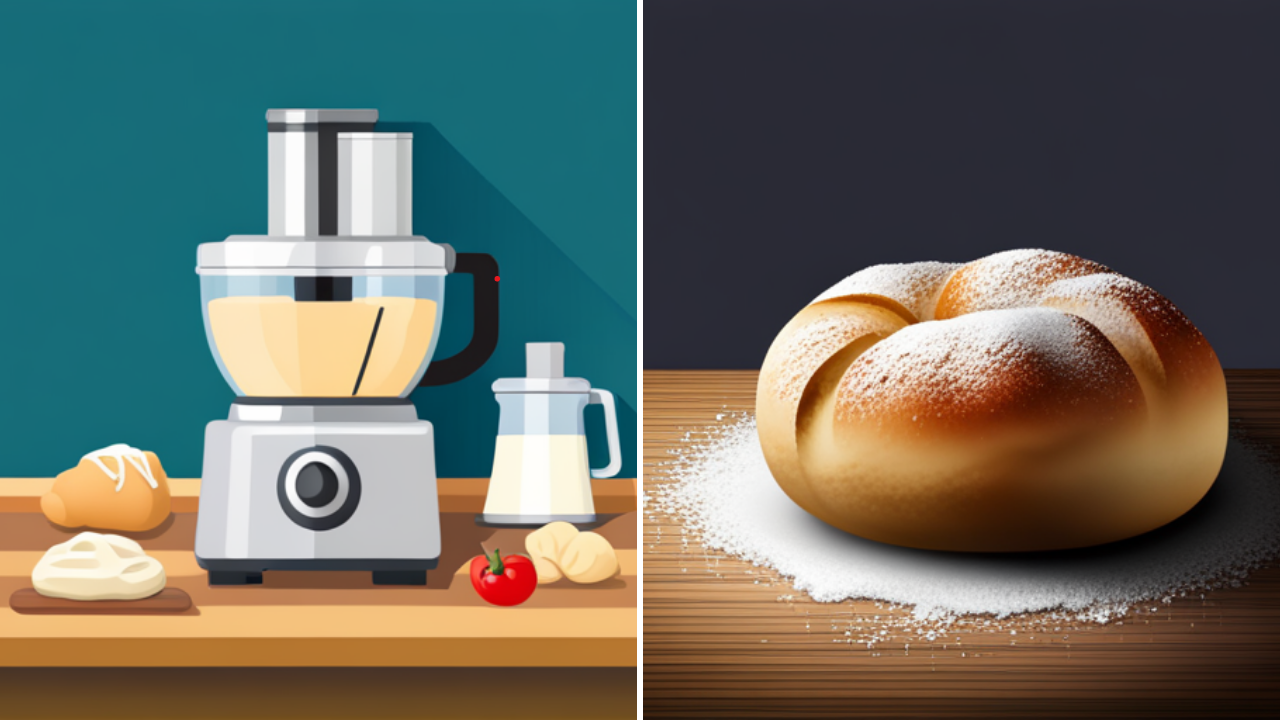
In the market for a food processor for small spaces? Check out our article for our top picks for mini food processors.
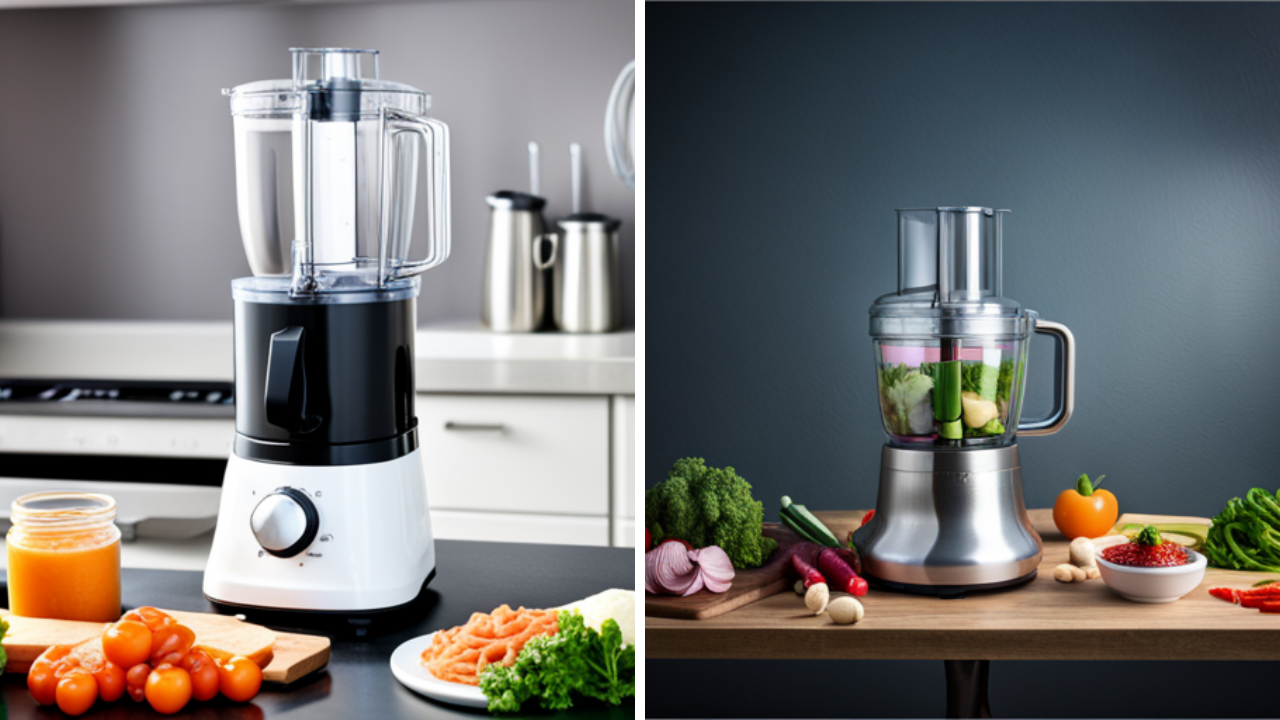
Our article on the best manual food processor may be of interest if you don't need the power of an electric one.
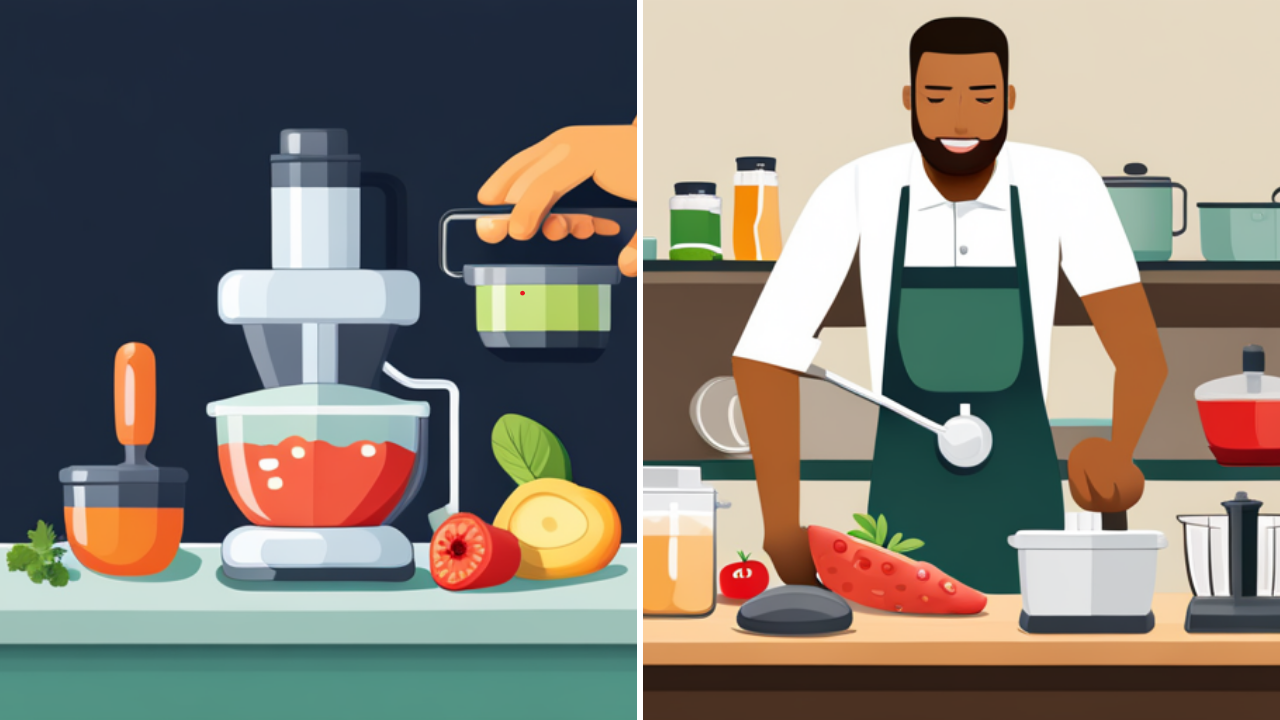
Secrets and Suggestions
- Right Temperature: Ensure ingredients, especially liquids, are at the recommended temperatures. For instance, too hot water can kill the yeast.
- Avoid Over-Processing: Over-kneading can result in a dense loaf. Knead just until the dough is smooth and elastic.
- Storing Dough: If not baking immediately, store the dough in the refrigerator after the first rise. When ready to bake, allow it to come to room temperature and proceed with the second rise.
With these steps and tips, you're on your way to baking perfect dough everytime!
FAQs
How long should I process the dough in a food processor?
The processing time for dough in a food processor varies depending on the type of dough you're making. Typically, for most bread and pizza doughs, you should process until the ingredients are well combined and the dough forms a cohesive ball, which usually takes about 45 seconds to 1 minute. Always refer to the specific recipe you're following, as some doughs might require shorter or longer processing times.
Can I make gluten-free dough in a food processor?
Absolutely! A food processor can handle gluten-free dough just as efficiently as regular dough. When making gluten-free dough, ensure you're using gluten-free flours like rice flour, almond flour, or coconut flour. The process might slightly differ due to the absence of gluten, which gives elasticity to the dough. It's essential to follow a gluten-free specific recipe to achieve the best results.
Which blade is preferable for making dough?
When it comes to kneading dough in a food processor, the choice of blade can influence the end result. The metal blade is swift and efficient, suitable for quick tasks. On the other hand, the plastic dough blade offers a gentler kneading process, closely resembling the process of hand-kneading. For most dough recipes, especially those requiring a delicate touch, the plastic dough blade is often the preferred choice.
Remember, always refer to the manufacturer's instructions for any specific cleaning guidelines for your food processor model.
Happy Baking!










